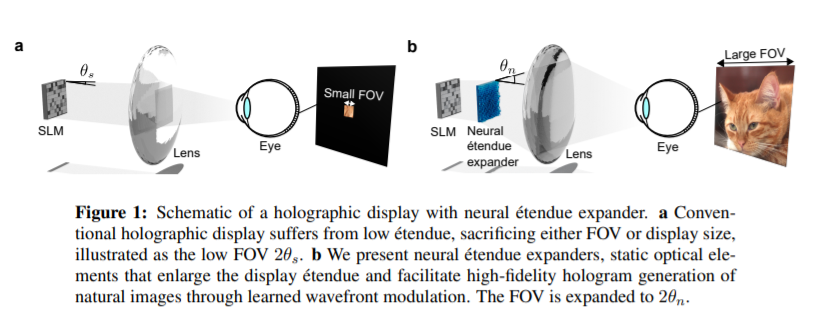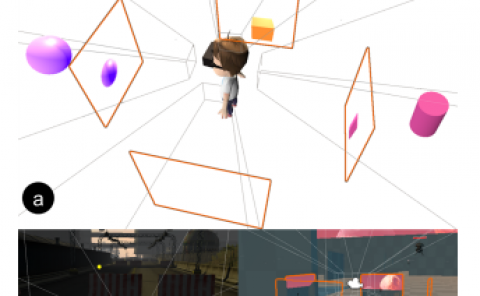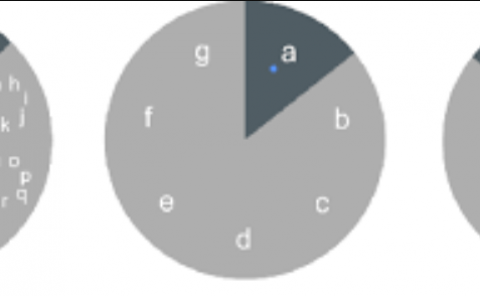Neural Étendue Expander for Ultra-Wide-Angle High-Fidelity Holographic Display
PubDate: Sep 2021
Teams: 1Princeton University2Facebook Reality Labs Research3KAUST
Writers: Seung-Hwan Baek, Ethan Tseng, Andrew Maimone, Nathan Matsuda, Grace Kuo, Qiang Fu, Wolfgang Heidrich, Douglas Lanman, Felix Heide
PDF: Neural Étendue Expander for Ultra-Wide-Angle High-Fidelity Holographic Display

Abstract
Holographic displays can generate light fields by dynamically modulating the wavefront of a coherent beam of light using a spatial light modulator, promising rich virtual and augmented reality applications. However, the limited spatial resolution of existing dynamic spatial light modulators imposes a tight bound on the diffraction angle. As a result, today’s holographic displays possess low étendue, which is the product of the display area and the maximum solid angle of diffracted light. The low étendue forces a sacrifice of either the field of view (FOV) or the display size. In this work, we lift this limitation by presenting neural étendue expanders. This new breed of optical elements, which is learned from a natural image dataset, enables higher diffraction angles for ultra-wide FOV while maintaining both a compact form factor and the fidelity of displayed contents to human viewers. With neural étendue expanders, we achieve 64× étendue expansion of natural images with reconstruction quality (measured in PSNR) over 29dB on simulated retinal-resolution images. As a result, the proposed approach with expansion factor 64× enables high-fidelity ultra-wide-angle holographic projection of natural images using an 8K-pixel SLM, resulting in a 18.5 mm eyebox size and 2.18 steradians FOV, covering 85\% of the human stereo FOV.


